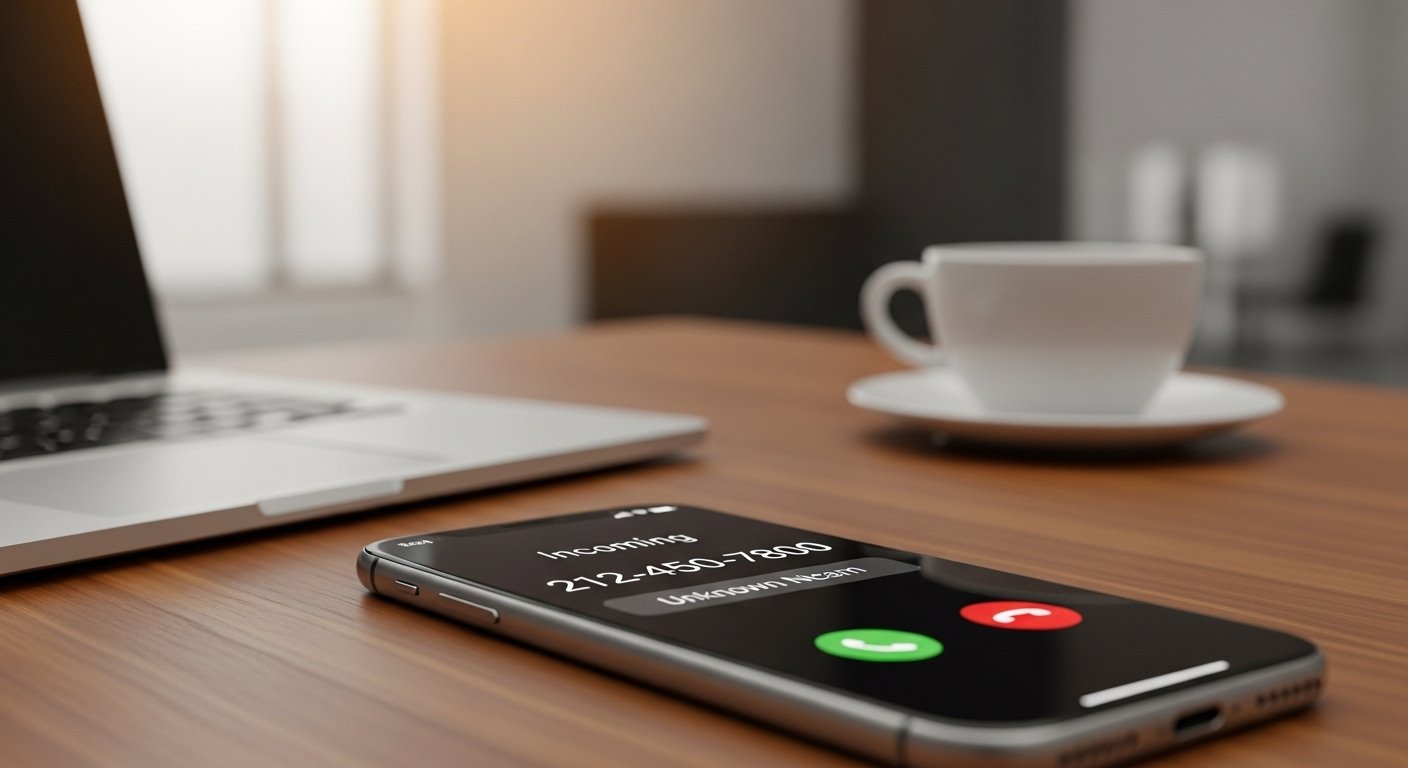You pick up your phone, see “212-450-7800” on the display and a voice tells you they’re from your bank’s fraud department. Heart races, you wonder: is this really your bank — or another scam? With so many spoofed calls hitting cell phones and landlines these days, it can get confusing. In this article we’ll dig into what this number is about, what people are saying, how to assess the risk, and what you can do to protect yourself.
What is 212-450-7800?
On the surface, it appears to be a legitimate phone number: assigned to the Midtown Manhattan office of JPMorgan Chase Bank at 390 Madison Ave., New York NY 10017.
However, multiple reports from users suggest that the number is being used (or appears to be used) by callers claiming to be from Chase (or similar bank-fraud departments) and trying to obtain sensitive information.
In other words: the number may be real, but that doesn’t guarantee the call you receive from it is genuine. Scammers can spoof numbers (make it look like coming from 212-450-7800) while operating somewhere else entirely.
What people are reporting
Legit vs. suspicious calls
-
Some users say they answered the call, and the caller claimed to be from Chase, knew partial account info or claimed unauthorized activity, and tried to transfer them or obtain verification. Example:
“The person identified themselves from Chase Fraud dept. only ask that I verify my name… then proceeded to tell me someone opened up a checking account in my name.”
-
Others say they called Chase back separately (via the number on their card or official website) and confirmed that the call was not initiated by Chase.
-
On the other side, some users say they did open an account recently and then received a call from this number that lined up with the bank-assigned representative, raising ambiguity.
-
Review/lookup sites (Tellows, Nomorobo, CallApp) list this number with high search volume, many ratings as “spam call” or “untrustworthy”.
Key takeaway
The number is highly flagged. If you receive a call from it and it is unexpected, you should treat it with caution. The presence of the number on a bank branch listing does not guarantee safety in any specific call.
Why the confusion happens
There are a few factors that make calls like this tricky:
-
Number spoofing – scammers can make the caller ID appear as a trusted number (e.g., 212-450-7800) even though the call is coming from a different line.
-
Partial legitimate connection – the number is a real branch number for Chase, so scammers exploiting that lend plausible credibility.
-
Urgency & fear tactics – typical scam calls claim “unauthorized transaction”, “account compromised”, or “urgent verification needed” so the recipient acts quickly without confirming.
-
Lack of standard practice – many banks will say they don’t initiate sensitive verification by phone (or won’t ask for full account numbers via unsolicited call). If a caller claims they must transfer you to the “Zelle fraud department” or “verifying your SSN” it’s a red flag. For example one report states:
“Pretended they were chase telling me i have outstanding charges … trying to transfer me to the ‘zelle’ department.”
How to tell if the call is legit
Here are practical checks you can do when you receive a call from this number (or any suspicious number):
-
Did you expect the call? If you weren’t expecting a fraud-alert call or a callback from your bank, that’s a caution sign.
-
Did the caller ask for full personal info, account numbers, or social-security details? Legitimate banks rarely (or ideally never) ask for full sensitive credentials during an unsolicited call.
-
Did they ask you to transfer the call or click a link? Suspicious.
-
Did you call back using an independent number you trust (from the back of your card or official website)? If yes: great. Confirm whether the bank actually initiated the call.
-
Check your account transactions immediately via your banking app or website. If there is no unusual activity, and your bank confirms no alert was generated: that increases chance it was a scam.
-
Check online number-lookup / spam-report sites for that number. As noted, 212-450-7800 has heavy spam flags.
-
Block the number and report it to your bank or to a fraud reporting service if suspicious.
What you should do
If you receive a call from 212-450-7800 (or any number) claiming to be from your bank and you feel unsure:
-
Don’t give out any sensitive info. Hang up if the caller asks for account numbers, PINs, SSN.
-
Call your bank using the number on your card or official website — ask if they made the call.
-
Change your credentials (passwords, banking app PINs) if you suspect compromise.
-
Set fraud alerts on your credit or bank account if you believe personal info may have been exposed.
-
Report the call to your bank’s fraud department and local consumer protection / tele-fraud body.
-
Remain vigilant – scams evolve. Receive calls you didn’t request? Consider blocking such numbers.
Why banks don’t like these calls either
For the bank (and you) this is bad for several reasons:
-
Customers lose trust when they think their bank might initiate a scam-like call.
-
Fraudsters impersonating the bank can lead to real financial loss.
-
Branch numbers being used (or spoofed) as part of fraud undermine security measures.
-
The bank must invest in fraud prevention, detection, and customer education.
So if your bank ever contacts you proactively, the call should still follow strict protocols. If something about the call “feels off” (unexpected, demands unusual action, requests too much personal info) treat it as suspect.
Conclusion
The number 212-450-7800 is a real branch number for JPMorgan Chase’s Midtown Manhattan location — but that does not guarantee that any call you receive from it is actually legitimate. The widespread reports of it being used (or seen used) by spoofers make it a caution zone. When you receive calls from it (or any bank-related number) you didn’t expect, take a moment: don’t panic, don’t provide sensitive info, and verify independently. Your bank and your personal security are best served by verification, calm, and informed action. Better to hang up and call back than to act too quickly.
FAQs
Q1: If the caller ID shows 212-450-7800, is it always safe?
No. Scammers can spoof caller-ID numbers so the display alone isn’t proof of legitimacy. Always verify the call independently.
Q2: What should I do if I gave them information already?
Immediately contact your bank’s fraud department, change your account passwords/PINs, monitor your statements, consider placing a fraud alert on your credit, and report the incident to consumer protection authorities.
Q3: Does my bank ever call me asking for account details or verification?
While banks sometimes call for security alerts, they typically won’t ask for full account numbers, Social Security numbers, or require you to transfer money. If a call asks for anything extraordinary, treat it with caution and verify via the bank’s known contact channels.

